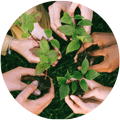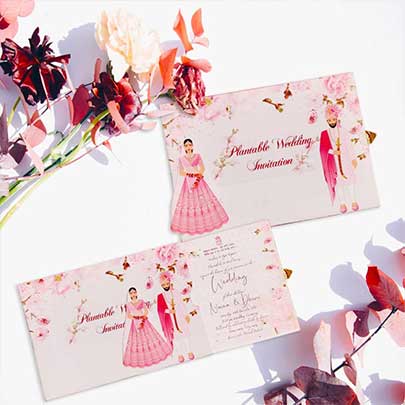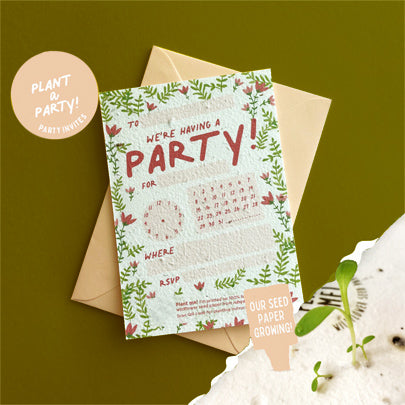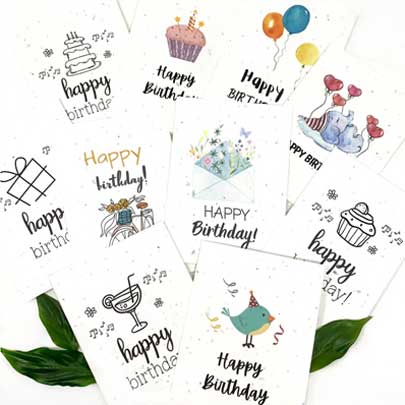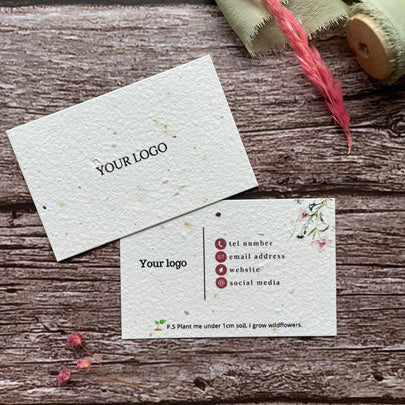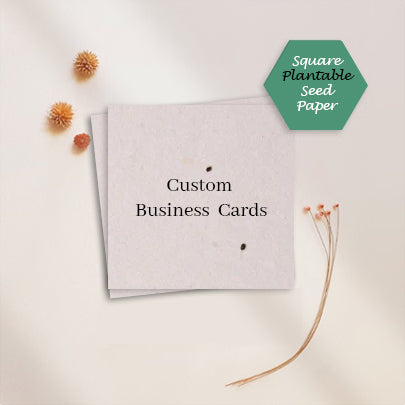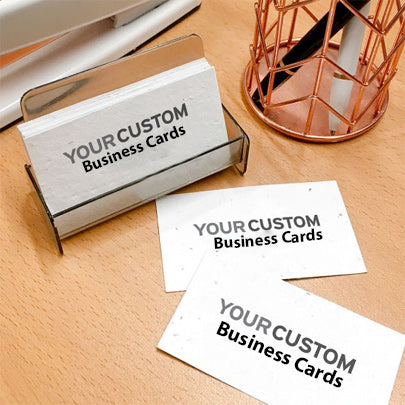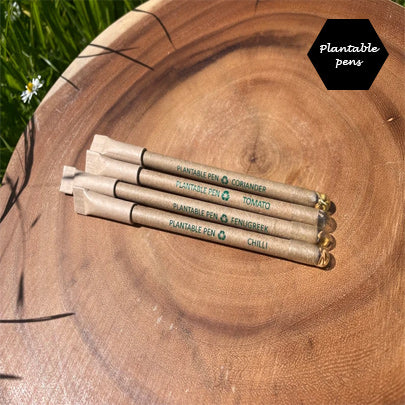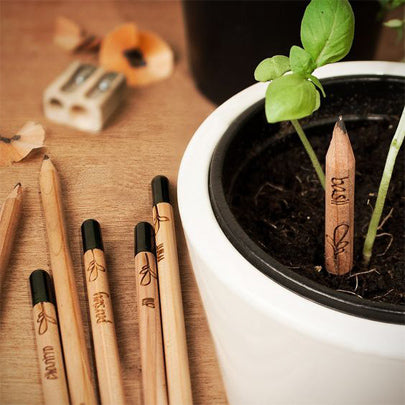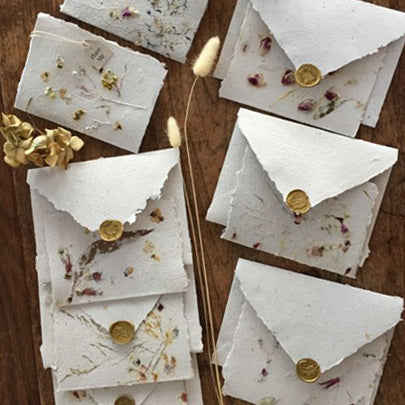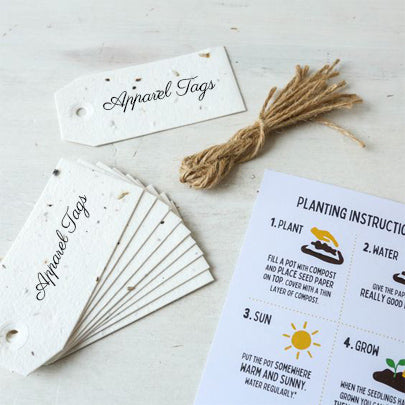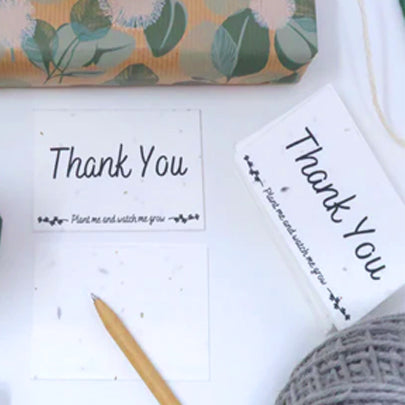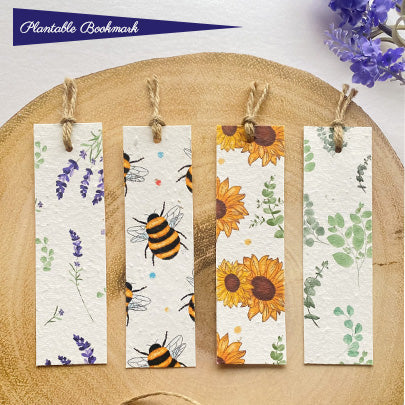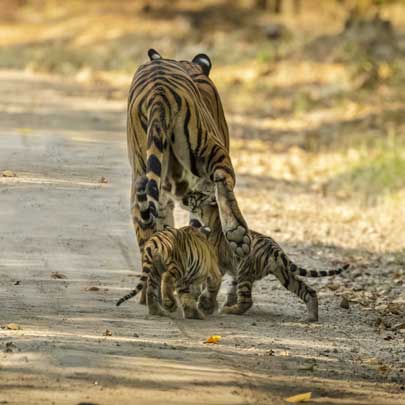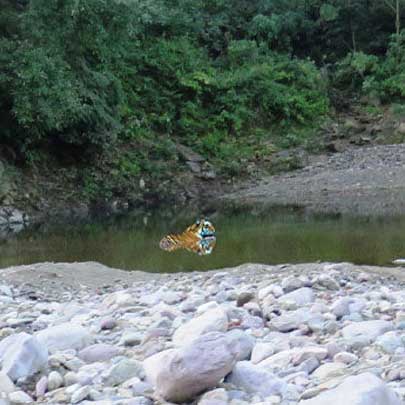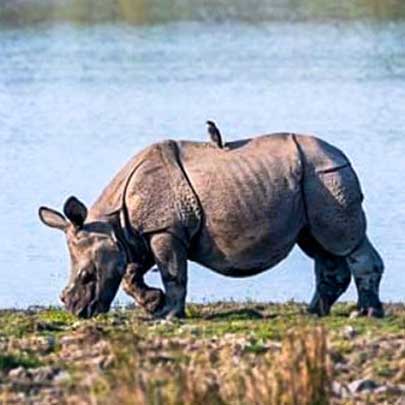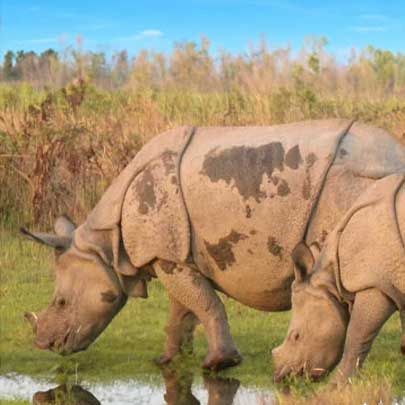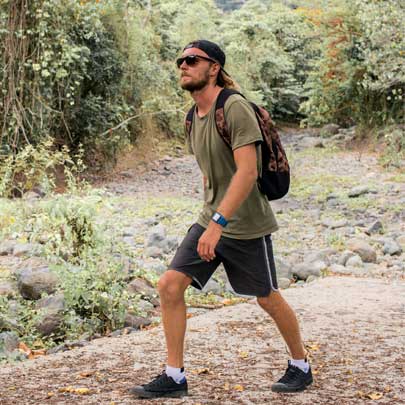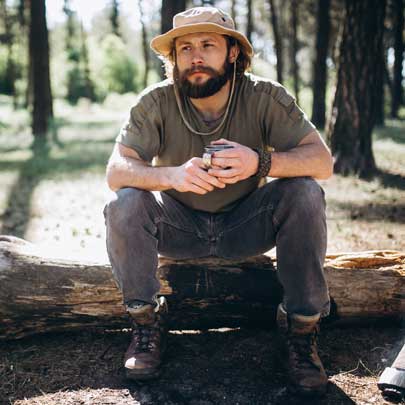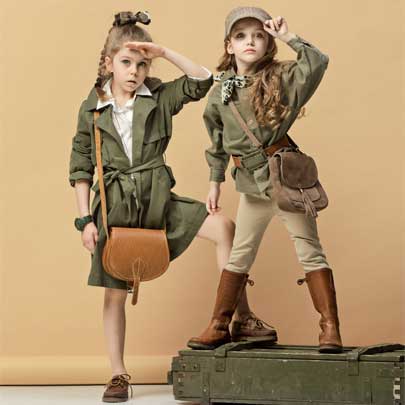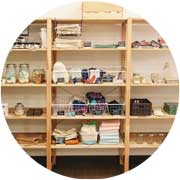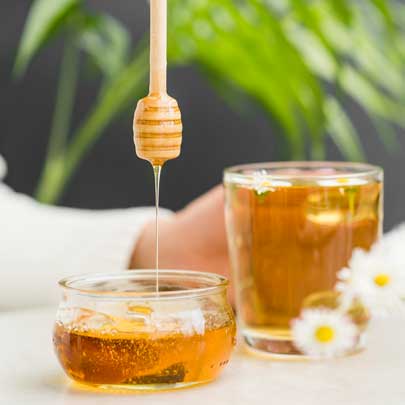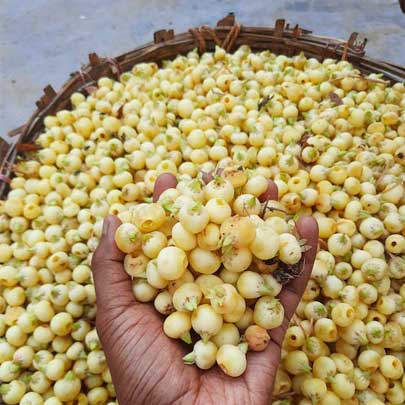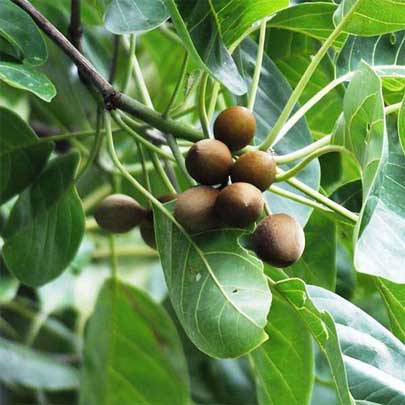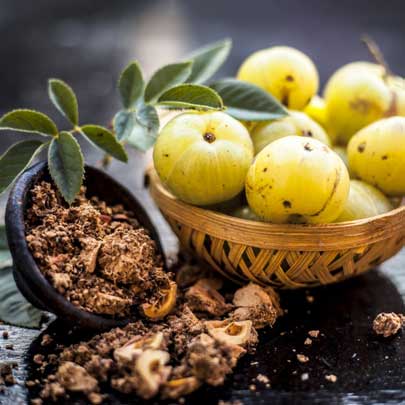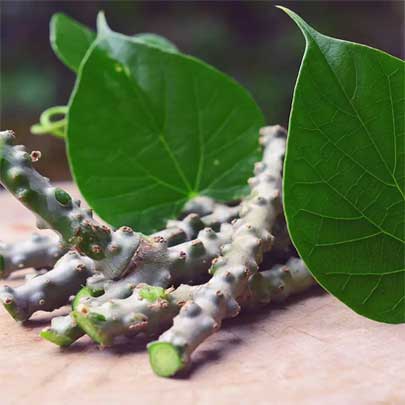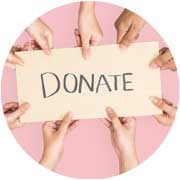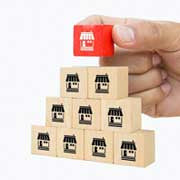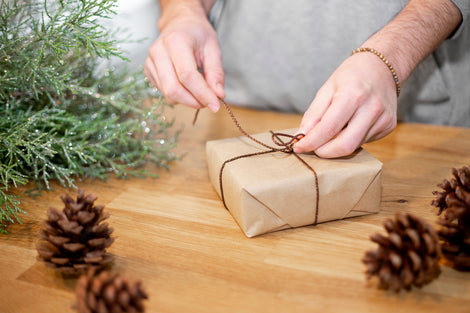The Role of Plantable Products in a Circular Economy: A Greener Future with Wildlense Eco Foundation
The Role of Plantable Products in a
Circular Economy: A Greener Future with
Wildlense Eco Foundation
As the global economy continues to grow, so does the mounting concern over waste generation and environmental degradation. Traditional linear models of "take, make, dispose" have proven unsustainable, contributing to climate change, pollution, and resource depletion. In response, the circular economy has emerged as a game-changing solution—aiming to minimize waste and maximize resource efficiency. At the heart of this transformative movement lies a promising innovation: plantable products.
In this blog, we’ll explore how plantable products are playing a pivotal role in advancing the circular economy, promoting a zero waste lifestyle, and helping brands like Wildlense Eco Foundation lead the charge in sustainable innovation.
What Is a Circular Economy?

The circular economy is a regenerative model designed to keep products, materials, and resources in use for as long as possible. Unlike the traditional linear economy, which ends in waste, the circular economy emphasizes reuse, recycling, composting, and repurposing.
Core principles of a circular economy include:
-
Designing out waste and pollution
-
Keeping products and materials in use
-
Regenerating natural systems
This model not only reduces environmental impact but also promotes economic resilience, innovation, and long-term sustainability.
The Rise of Plantable Products

Plantable products—items embedded with seeds that can be planted after use—are gaining popularity as a practical step toward sustainability. These products are typically made from biodegradable materials like recycled paper or compostable pulp, and can include seeds of herbs, flowers, or even vegetables.
Common types of plantable products include:
-
Plantable seed paper (used for cards, tags, and packaging)
-
Plantable pencils and pens
-
Plantable coasters and bookmarks
-
Seed-infused business cards
-
Eco-friendly event invites and wedding cards

These eco-friendly products not only reduce waste but also contribute positively to the environment by giving back green cover in the form of plants.
How Plantable Products Support a Circular Economy
1. Waste Reduction and Zero Waste Goals
Plantable products are inherently biodegradable and compostable, aligning perfectly with the zero waste lifestyle. Instead of ending up in landfills, they break down naturally and leave behind greenery—literally.
2. Sustainable Packaging Alternatives
With the increasing demand for eco-friendly packaging, plantable materials offer a functional, attractive, and green solution. Brands can use seed paper for packaging inserts, labels, and product wrappers, turning waste into a planting opportunity for consumers.
3. Regenerative Benefits
Beyond being sustainable, plantable items are regenerative. Once planted, they promote biodiversity, purify the air, and enhance soil quality—thus restoring ecosystems, a core principle of circular economy thinking.
4. Consumer Engagement and Awareness
Plantable products are educational. They engage users directly in sustainability, making the eco-effort more tangible. Whether it’s a child planting a birthday card or a company gifting plantable calendars, these products serve as reminders of our role in environmental stewardship.
Wildlense Eco Foundation: Leading the Way with Sustainable Solutions

One organization at the forefront of promoting plantable products is the Wildlense Eco Foundation. Based in India, this eco-conscious NGO is dedicated to wildlife conservation, environmental awareness, and sustainable living.
Wildlense has developed a wide range of eco-friendly, plantable merchandise that includes:
-
Plantable notebooks and journals
-
Seed paper wedding invites
-
Eco-friendly corporate gifts
-
Sustainable packaging for NGOs and eco-brands
Their efforts go beyond just product design. Wildlense Eco Foundation actively educates communities, collaborates with local artisans, and supports rural livelihoods—all while reducing environmental impact. By integrating plantable products into their conservation efforts, they are redefining how we perceive everyday items.
Why Brands Are Shifting to Plantable and Eco-Friendly Products

1. Rising Eco-Conscious Consumer Demand
Today’s consumers, especially millennials and Gen Z, are prioritizing sustainable brands and ethical consumption. Plantable products provide a practical and symbolic way for brands to demonstrate commitment to sustainability.
2. Positive Brand Image and Differentiation
Offering eco-friendly promotional materials or plantable packaging makes brands stand out. It sends a clear message of environmental responsibility, helping to build brand trust and loyalty.
3. Complying with Environmental Regulations
With more governments implementing plastic bans and sustainability mandates, companies are being encouraged—if not required—to adopt circular practices. Plantable products offer a simple yet impactful compliance pathway.
The Impact of Plantable Products on Environment and Society

✅ Reduces Plastic Pollution
By replacing plastic pens, tags, and cards with biodegradable alternatives, plantable products help reduce plastic waste.
✅ Promotes Biodiversity
The embedded seeds often include pollinator-friendly species like wildflowers or herbs, which support bees, butterflies, and local ecosystems.
✅ Supports Local Economies
Organizations like Wildlense Eco Foundation often work with rural communities and artisans to produce plantable products, fostering local employment and social equity.
✅ Lowers Carbon Footprint
From production to disposal, plantable products have a significantly lower carbon footprint compared to traditional materials.
Challenges and Opportunities
While the adoption of plantable products is growing, challenges like cost competitiveness, consumer education, and scalability still exist. However, with technological advancements, bulk manufacturing, and growing consumer awareness, the future looks promising.
Companies and NGOs like Wildlense Eco Foundation are playing a critical role in bridging these gaps by offering affordable and creative plantable options, while also promoting awareness through workshops, exhibitions, and social campaigns.
How You Can Contribute
Whether you're a business owner, event planner, educator, or simply an eco-conscious citizen, you can integrate plantable products into your daily life:
-
Choose plantable business cards and gift tags for events or corporate gifting.
-
Opt for seed paper wedding invitations or birthday cards.
-
Encourage schools and workplaces to adopt plantable stationery.
-
Support NGOs like Wildlense Eco Foundation by purchasing from them or collaborating on green initiatives.
Every small action contributes to a larger shift toward a sustainable, circular future.
Final Thoughts: Growing a Greener Future, One Seed at a Time
The circular economy is not just a buzzword—it’s a necessary evolution of how we interact with the planet. Plantable products serve as a tangible, beautiful bridge between consumers and sustainability, turning waste into life.
By embracing these innovations and supporting organizations like Wildlense Eco Foundation, we take meaningful steps toward a zero waste lifestyle and a more regenerative economy. The next time you pick up a pen or card, ask yourself: can this grow into something beautiful?
If the answer is yes, you're already part of the solution.



